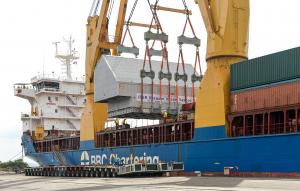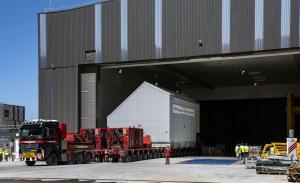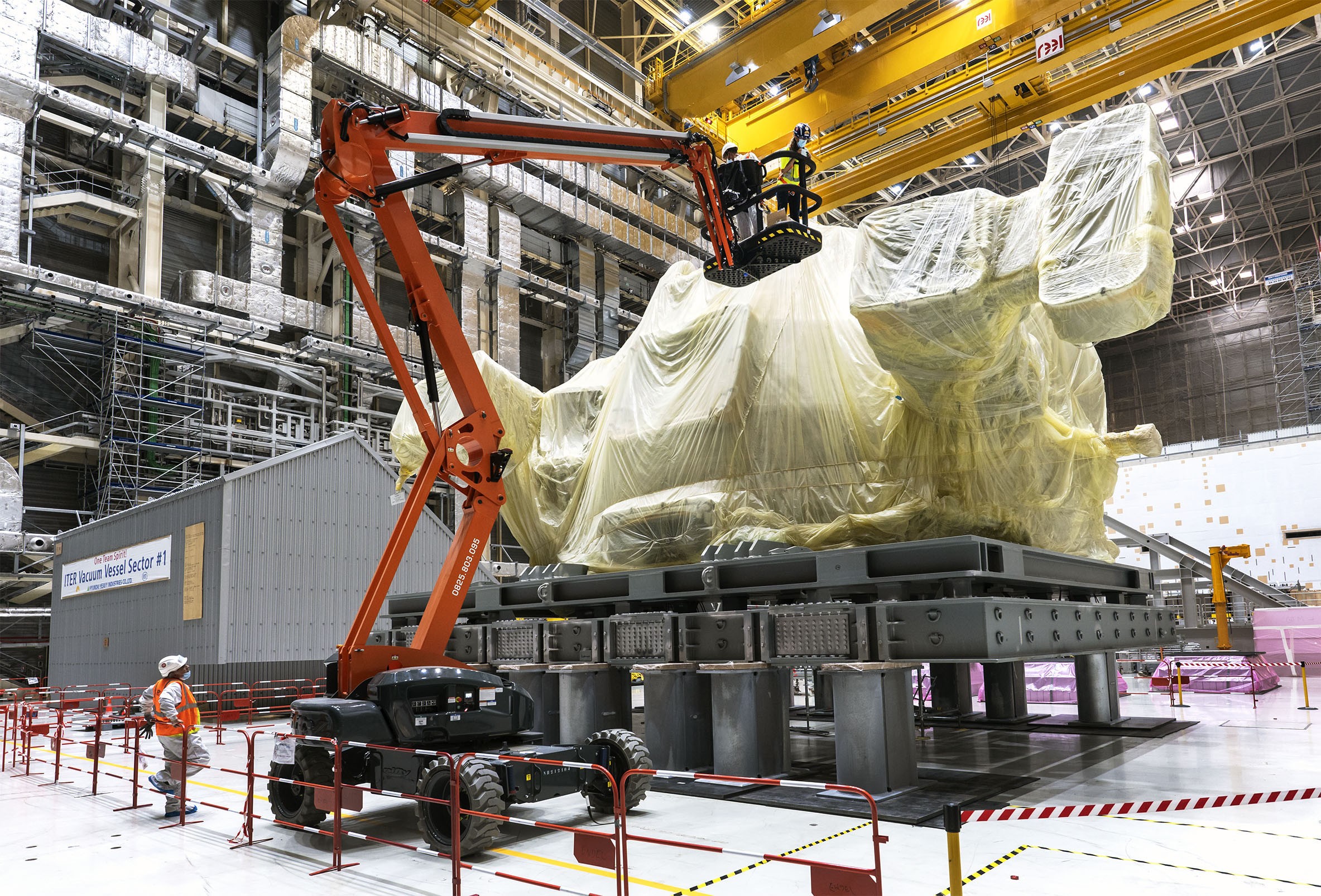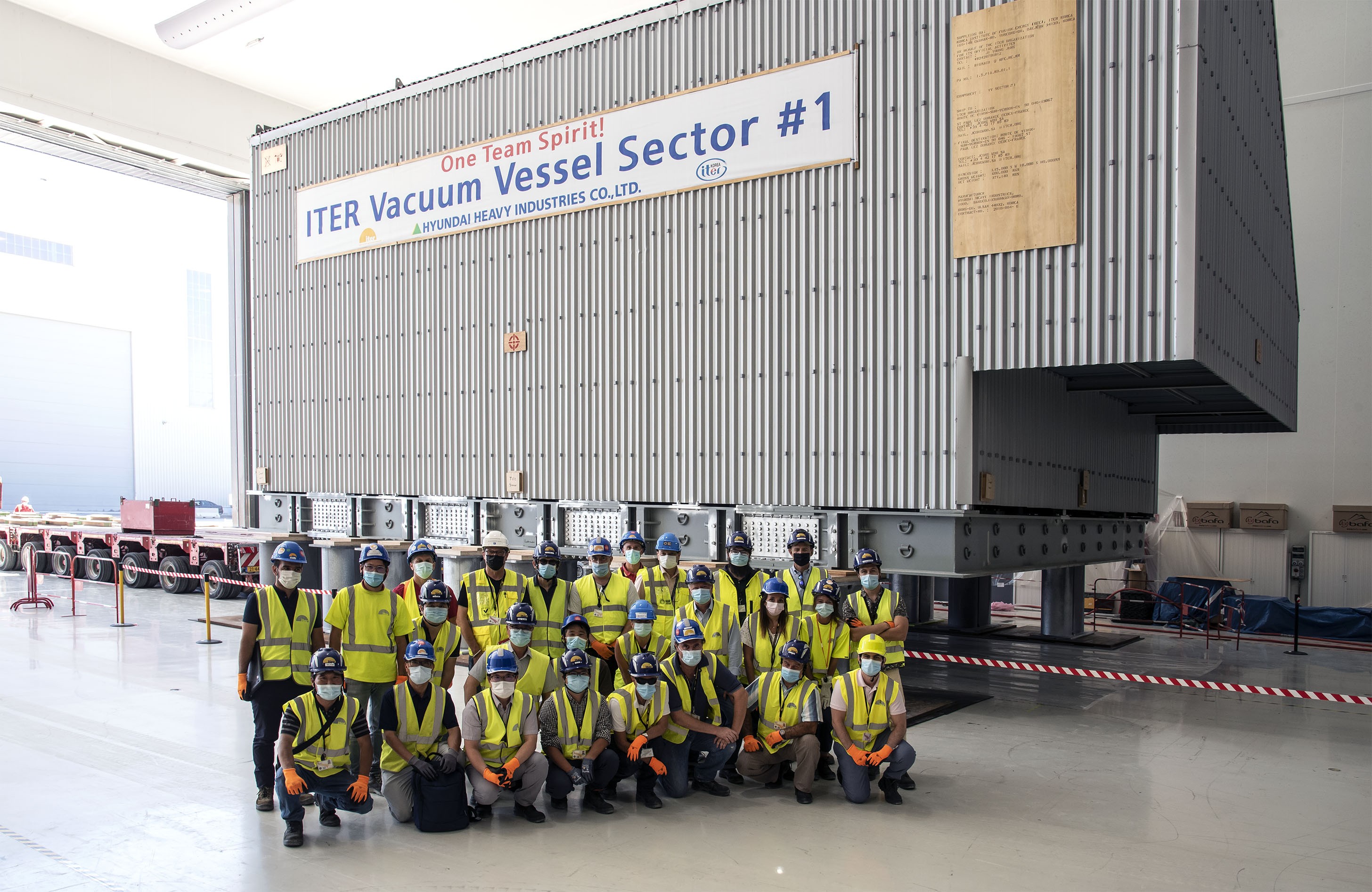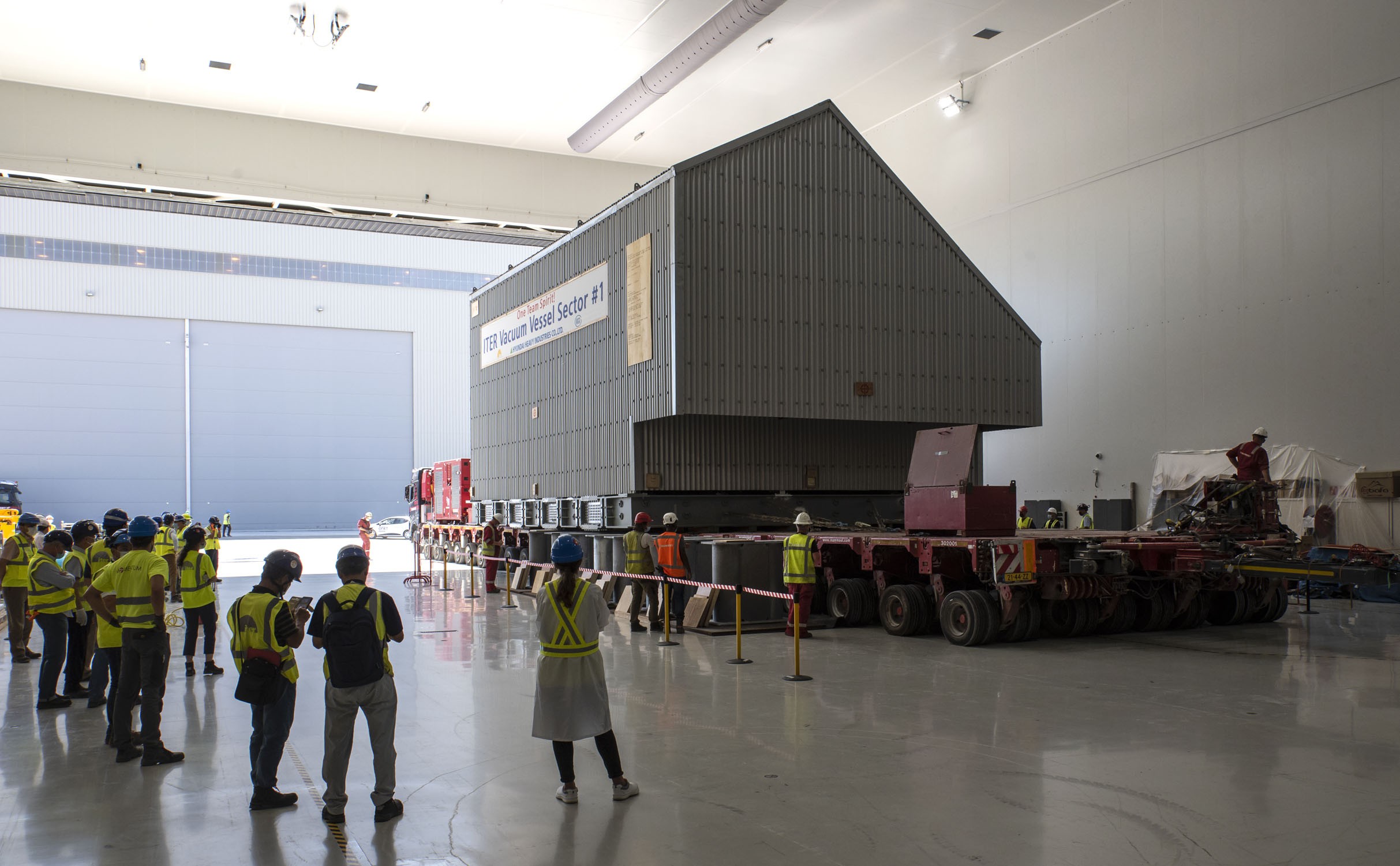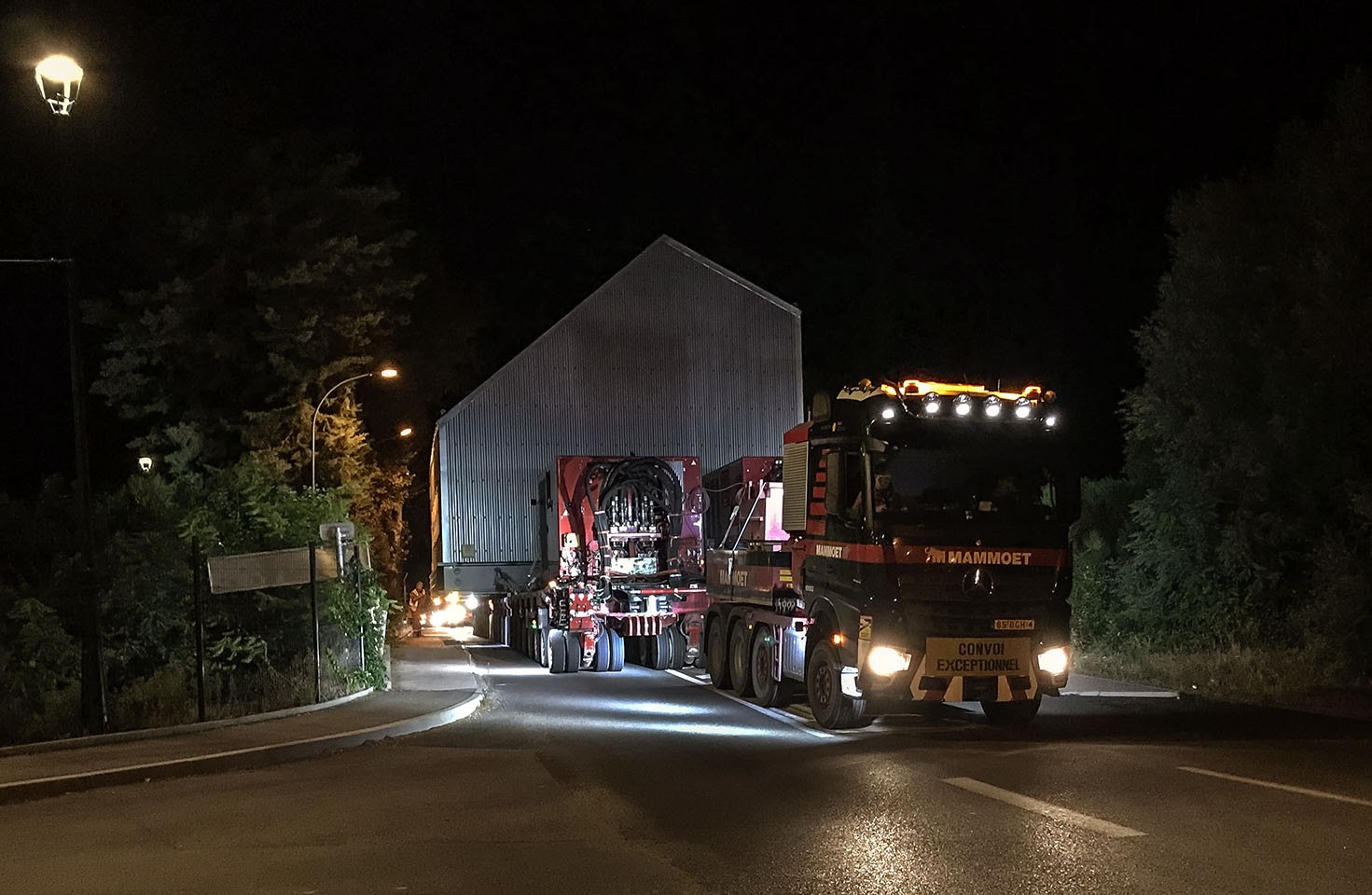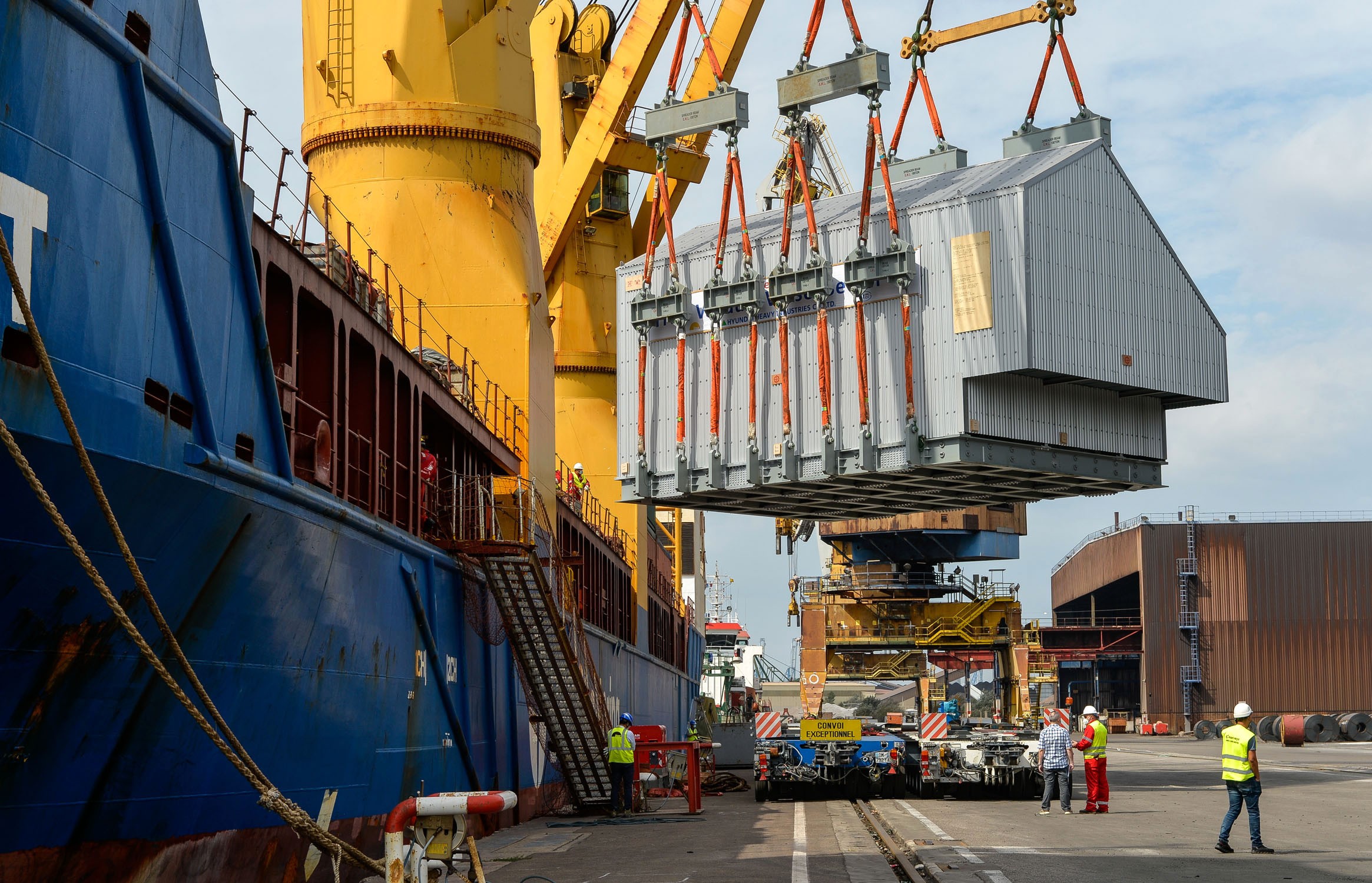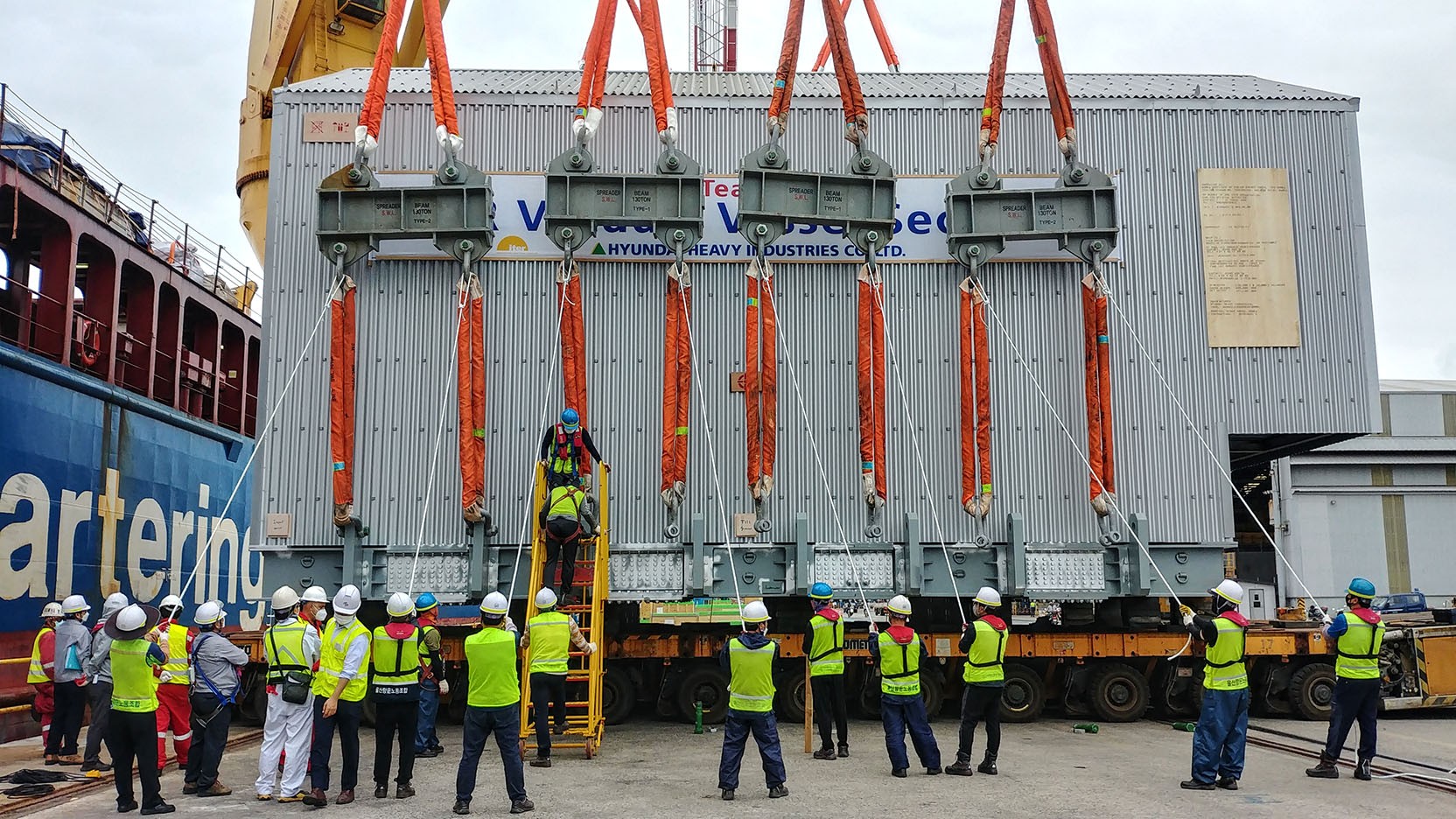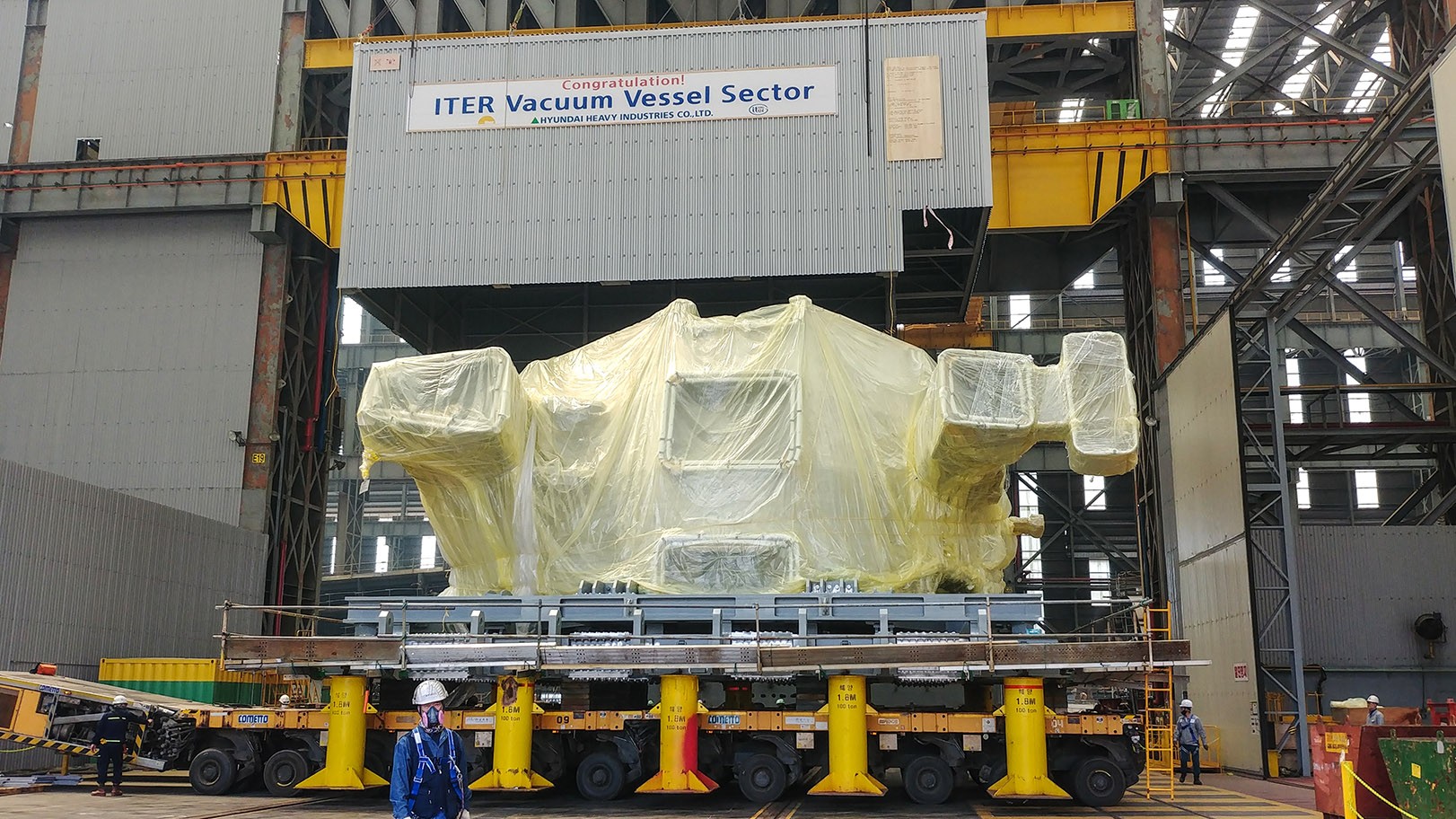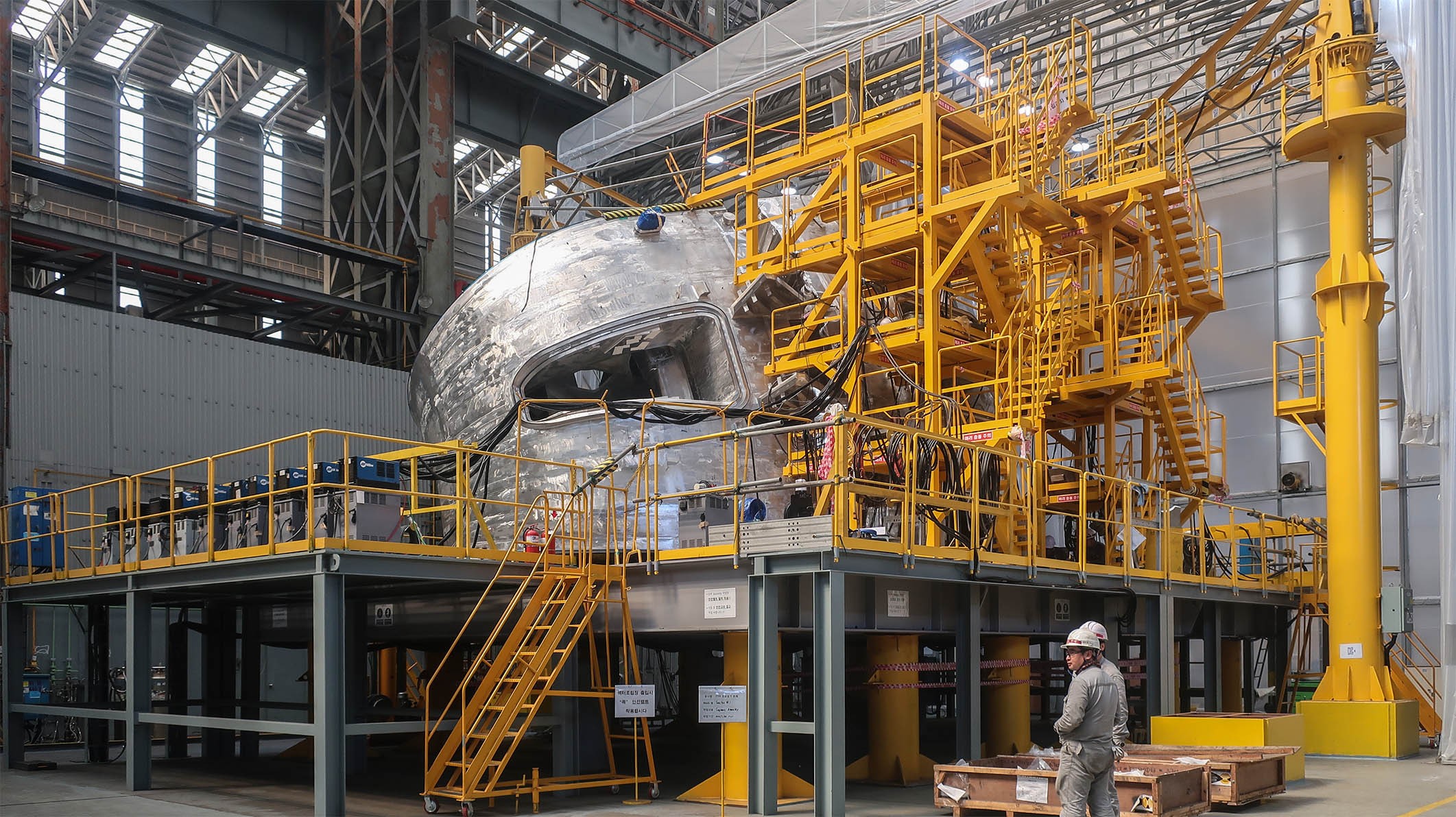2nd vacuum vessel sector from Korea
One vacuum vessel sector is already positioned inside a giant sub-assembly tool, ready to be associated with two vertical coils and thermal shielding to form the first sub-assembly of the ITER tokamak. A second sits on stillage at the other end of the Assembly Hall, still wrapped in its protective plastic sheet. The latest sector, which shipped from Hyundai Heavy Industries in Ulsan, Korea, on 24 June, was delivered to the ITER construction site in the early hours of 27 August.
Called sector #1(7)*, it is the second vacuum vessel sector delivered by the Korean Domestic Agency of four that it will procure in total; two other sectors are respectively 96 percent and 89 percent complete in Korea. Five other sectors are also progressing under European responsibility. Procured from the AMW consortium (Ansaldo Nucleare, Mangiarotti, Walter Tosto, and sub-contractors), they range in completion from 72 to 94 percent.
The nine 40-degree sectors required to form the ITER toroidal chamber are largely similar, differing only in the details relevant to their position in the circular arrangement and interfacing componen
"Like sector #6, delivered last year, sector #1(7) is a 'regular' sector, meaning that it interfaces with standard equatorial port plugs. This contrasts with 'irregular' sectors that interface with features such as neutral beam penetrations," explains Vacuum Vessel Section Leader Alex Martin. "The slight differences between the two sectors we have on site are in the inner rails, the triangular support, and penetrations in the lower area to meet specific interface requirements."
Like its predecessor, sector #1(7) will go through a series of operations in the Assembly Hall, such as the installation of diagnostics and instrumentation, before it is upended and moved to the sub-assembly tooling to form the second of the ITER Tokamak sub-assemblies.
* Readers will have seen this sector referred to as #7 in past articles. In fact, sectors #1 and #7 (both supplied by Korea) are nearly identical. It was decided to install Korea's second sector (#1) in the place of #7 in the assembly pit at ITER—hence the name "#1(7)"—in order to accelerate the assembly of the torus chamber. The sectors in positions #6 and #7 in the assembly pit will be the first of nine to be welded together.

